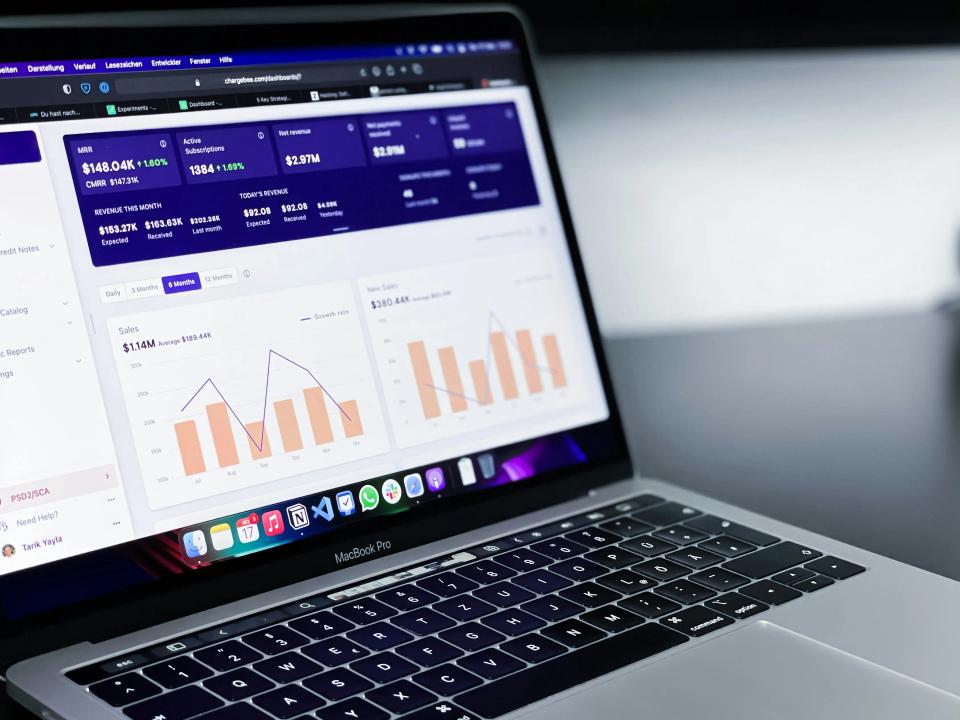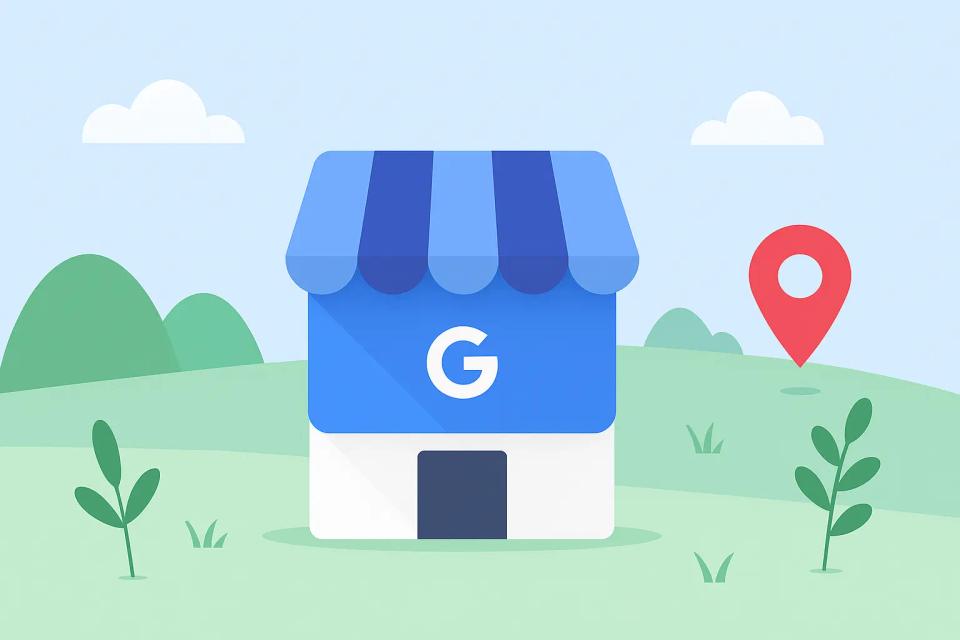The truth is, managing local SEO across multiple storefronts, clinics, or service areas presents a unique labyrinth of challenges. You're juggling multiple Google Business Profiles, striving for consistent branding that still feels local, and attempting to create content that resonates with diverse communities. It’s enough to make even seasoned marketers sweat.
But what if you could cut through the noise? This isn't about the basic local SEO checklist you've seen a dozen times. We're diving deep into advanced local SEO tactics for multi-location businesses – the kind that forge an undeniable competitive edge and plant your flag firmly at the top of local search results, across every single one of your locations. At CaptivateClick, we've spent over 15 years guiding businesses like yours through these very complexities, turning local search into a powerful engine for growth.
The Unshakeable Foundation: Mastering Your Multi-Location Digital Footprint
Your digital presence is the bedrock of local dominance. Without a solid foundation, even the most sophisticated tactics will crumble. For multi-location businesses, this means meticulous attention to detail, multiplied by every location you operate.
Granular Google Business Profile (GBP) Optimization for Each Location
Think your claimed Google Business Profiles are "good enough"? Think again. Basic claiming is just the entry ticket; true optimization for Google Business Profile for multiple locations means wringing every last drop of value from each profile. Dive deep into utilizing all relevant GBP features: meticulously list your Services and Products, proactively manage the Q&A section, and consistently use Google Posts for location-specific announcements, offers, and events. According to Elfsight, recent GBP updates simplify managing multiple locations by centralizing profile edits directly through Google Search, making real-time updates more accessible.
Don't just set it and forget it. Proactively managing your GBP Q&A is crucial; Reputation.com highlights that pre-emptively answering common questions and even upvoting helpful existing ones can significantly enhance user experience and trust. Furthermore, ensure each location boasts unique and accurate primary and secondary categories. As Dalton Luka points out, leveraging specific GBP attributes like accessibility or payment options helps you rank for highly specific, intent-driven searches, capturing niche customer segments. For a deeper dive into initial GMB setup, explore our guide on mastering local SEO by optimizing your GMB profile.
The visual and interactive elements of your GBP are paramount. Taggbox emphasizes that customer reviews and photo uploads directly impact credibility, noting that 50% of users trust online reviews as much as personal recommendations. Use Google Posts strategically for each location – announce a new service at your downtown branch or a special offer at your suburban outlet. This isn't just about information; it's about creating a dynamic, engaging local presence that screams "we're active and ready for your business!"
Architecting High-Converting, Hyper-Localized Landing Pages
Are you still using generic service pages with a swapped-out city name for each location? Stop. That’s a fast track to mediocrity in local search. To truly connect and convert, each of your locations deserves its own high-converting, hyper-localized landing page. These pages are your digital storefronts, tailored to the unique flavor of each community you serve.
Each location page must be a masterpiece of local relevance. This means unique content that speaks to local nuances, not just a find-and-replace on the city name. Essential elements include an embedded Google Map for that specific spot, the full NAP (Name, Address, Phone Number) prominently displayed and schema-optimized, and genuine local testimonials. Digital Third Coast highlights that embedding neighborhood keywords and local landmarks into these pages can lead to significant visibility boosts, with some businesses seeing a 57% increase.
Furthermore, include photos of the local team or storefront to build familiarity and trust. Craft location-specific calls-to-action (CTAs) that guide visitors towards the most relevant next step for that particular branch. Symphonic Digital advises that integrating LocalBusiness schema and breadcrumb markup structures this data effectively for search engines. Finally, implement smart internal linking strategies; Optuno suggests a "linkframe" strategy connecting location pages to distribute authority and improve crawl efficiency, potentially leading to 57% higher visibility in local searches.
Advanced Keyword Strategies for Local Supremacy
Winning in local search means speaking your customers' language, right down to the neighborhood level. Generic keywords won't cut it when you're aiming for local supremacy. You need to dig deeper, understanding the unique ways people search for your services in each specific area.
Beyond "[Service] in [City]": Uncovering Hyperlocal & "Near Me" Intent
It's time to move past the basic "[Service] in [City]" keyword formula. True local dominance requires uncovering hyperlocal search terms – think neighborhood-specific keywords, local landmarks, and even colloquial phrases people use. ClickInsights outlines a powerful process for hyperlocal keyword research, emphasizing that terms like "SoHo cafes" often outperform broader city-level keywords by capturing high-intent traffic. They've seen businesses achieve a 200% increase in "near me" traffic by optimizing for such colloquial terms.
Optimizing for "near me" searches is non-negotiable. This requires strong GBP signals, robust location page authority, and content that screams local relevance. Understanding user intent is key; someone searching "emergency plumber downtown" has a different, more urgent need than someone browsing "best Italian restaurants uptown." As Local Falcon points out, free tools can help uncover conversational queries, including long-tail phrases and voice search terms that often indicate high purchase intent.
This deep dive into local vernacular allows you to connect with potential customers on a more personal level. It shows you understand their community, their needs, and their way of searching. This isn't just SEO; it's building a genuine local connection that fosters trust and drives conversions. For more foundational insights, consider boosting your local SEO for nearby searches.
Strategic Keyword Mapping for Individual Location Pages
Once you've unearthed these golden hyperlocal keywords, what's next? You must strategically map them to your individual location pages. Each page should target a unique, relevant set of local keywords, ensuring that your online presence is laser-focused for each community you serve.
This meticulous mapping is crucial for avoiding keyword cannibalization. This occurs when multiple pages on your site compete for the same keywords, confusing search engines and diluting your ranking potential. By assigning distinct keyword sets to each location page, you tell Google exactly which page is most relevant for a specific local search.
Neil Patel advocates for content localized to specific events or community aspects, which naturally incorporates unique local keywords and builds trust. While focused on content, the principle applies directly to keyword strategy: unique local focus per page. This targeted approach not only improves your rankings but also enhances the user experience by delivering highly relevant content to local searchers.
Scaling Local Citation & NAP Management Like a Pro
Consistency is king in local SEO, especially when you're juggling multiple locations. Your NAP (Name, Address, Phone Number) information is your digital handshake with search engines and customers alike. Get it wrong, and you're sabotaging your own success.
The Criticality of NAP Consistency (and the Perils of Inconsistency)
For multi-location business SEO, NAP consistency across all online platforms isn't just important – it's absolutely vital. Even minor discrepancies, like "St." versus "Street" or an old phone number lingering on a forgotten directory, can confuse search engine crawlers and erode your local authority. Wired Media warns that these hidden errors can seriously hurt your rankings, and businesses with consistent NAP see 44% more clicks in the local 3-pack.
The perils of inconsistency are significant. Conflicting information sends mixed signals to Google, making it harder to trust your business details. This can lead to lower rankings, lost visibility in the coveted map pack, and ultimately, frustrated customers who can't find or contact you.
Imagine a potential customer finding three different phone numbers for your Anytown branch. Which one do they call? More likely, they'll call your competitor who presents clear, consistent information. This isn't just about search algorithms; it's about customer trust and ensuring a seamless path to your door.
Advanced Citation Building & Management Strategies
Managing citations for one business is a task; for multiple locations, it's a monumental undertaking without the right strategy. Start by conducting a thorough audit of existing citations for all your locations. Identify inconsistencies, duplicates, and outdated information that could be dragging you down. Business Nucleus suggests categorizing citations into tiers and auditing quarterly, noting that a shocking 68% of consumers abandon businesses with conflicting address information online.
Next, prioritize building citations on high-authority local and industry-specific directories relevant to each specific location. Don't just aim for quantity; quality and relevance matter most. Develop efficient strategies for cleaning up incorrect or duplicate listings. Thankfully, you don't have to do this all manually. Leverage tools designed for citation management at scale; Localo’s platform, for instance, tracks and manages citations across numerous directories, with users achieving significant visibility growth by targeting relevant industry-specific sites.
These tools can automate much of the cleanup and building process, monitor for new errors, and even track competitor citations, giving you a strategic edge. Investing in such a system can reduce manual oversight by as much as 70%, according to Localo. For more on the resources available, check out our insights on harnessing essential local SEO tools and techniques.
Unstructured Citations
Beyond traditional directories, don't overlook the power of unstructured citations. These are mentions of your business name, address, or phone number on local blogs, news websites, community forums, and social media pages. While they might not be in a structured format, search engines like Google are increasingly adept at recognizing these mentions as signals of local prominence.
Wired Media specifically highlights these unstructured citations from local news mentions as often untapped ranking opportunities. Actively seek out opportunities for local press coverage, sponsor community events, or engage with local influencers. Each mention, even without a direct link, contributes to your overall local authority and can subtly influence your search rankings.
Think of it as digital word-of-mouth. The more your individual locations are talked about positively within their local online ecosystems, the more search engines will view them as legitimate, authoritative local entities. This holistic approach to citation building is a hallmark of advanced local SEO strategies.
Leveraging Reviews Across All Your Locations
In the world of local search, reviews are pure gold. They build trust, influence purchasing decisions, and significantly impact your rankings. For multi-location businesses, a systematic approach to review generation and management across all branches is non-negotiable.
Systematizing Review Generation for Each Branch
You can't just hope for reviews; you need a proactive system to encourage them. Implement a consistent process to request reviews post-service or post-purchase for each individual location. This could involve automated email follow-ups, SMS requests, or even in-person prompts with QR codes leading directly to review platforms.
Make it easy for happy customers to share their positive experiences. Moz recommends using personalized review requests with direct links to your GBP review page for each specific location, noting this can increase submission rates by up to 40%. The easier you make it, the more likely customers are to leave that coveted 5-star rating and glowing testimonial.
This isn't about being pushy; it's about striking while the iron is hot, when the positive experience is fresh in their minds. A steady stream of recent, positive reviews for each branch signals to both customers and search engines that you're consistently delivering value. For a deeper dive, explore our guide on leveraging customer reviews for local SEO success.
Responding Effectively and Consistently to All Reviews
Generating reviews is only half the battle; responding to them is equally crucial. Make it a policy to respond to all reviews – positive and negative – for each of your locations. A thoughtful response to a positive review shows appreciation and encourages further engagement.
Addressing negative reviews promptly and professionally can turn a dissatisfied customer into a loyal advocate. It demonstrates that you value feedback and are committed to resolving issues. Taggbox highlights that businesses responding to 80% or more of their reviews earn significantly more clicks than competitors who ignore them. While templates can provide a starting point, strive for personalized responses that acknowledge specific comments.
This consistent engagement builds a reputation for excellent customer service across all your branches. It shows potential customers that you're listening and that you care, which can be a powerful differentiator in a crowded local market. Remember, your review responses are public and contribute to your overall brand perception.
Showcasing Location-Specific Reviews
Don't let those hard-earned positive reviews languish only on third-party platforms. Showcase them! Embed or feature location-specific reviews directly on their corresponding local landing pages. This provides powerful social proof right where potential customers are making decisions.
Using review schema markup on these embedded reviews can also help them appear as rich snippets in search results, making your listings more attractive and potentially increasing click-through rates. Moz emphasizes showcasing reviews on location pages with schema markup to enhance this visibility. Imagine a searcher seeing your star rating directly in the SERP – it’s an immediate trust signal.
By strategically displaying reviews unique to each location, you reinforce local credibility and provide tailored social proof. A customer looking for services in Northwood cares more about reviews from Northwood residents than from those across the state. This targeted approach makes your marketing more effective and your branches more appealing.
Hyperlocal Content & Technical On-Page Optimization
Content is the fuel for your local SEO engine, and technical optimization ensures that engine runs smoothly. For multi-location businesses, this means creating content that resonates deeply with each local community and ensuring every location page is technically sound.
Developing a Content Strategy that Resonates Locally
Your content strategy needs to go beyond generic blog posts. Think hyperlocal. What's happening in each community you serve? Develop content around local event participation, share stories of community involvement, create local case studies, or spotlight team members from specific branches. This type of content not only engages local audiences but also naturally incorporates those valuable hyperlocal keywords.
This approach supports local search optimization by demonstrating your active presence and relevance within each community. It provides fresh, unique material for your location pages and GBP posts, signaling to Google that your business is a vibrant part of the local fabric. For comprehensive guidance, explore our post on creating locally relevant content that ranks.
Consider interviewing local leaders, sponsoring a neighborhood little league team and writing about it, or creating guides to local attractions near your branches. This content isn't just SEO-fodder; it builds genuine connections and positions your brand as a valued local partner. This is how you move from being just a business in town to the business in town.
Advanced On-Page SEO for Location Pages
Each of your hyper-localized landing pages needs meticulous on-page SEO. This means optimizing title tags, meta descriptions, and header tags (H1, H2, H3) with the specific local keywords you've mapped to that page. Don't forget image alt text – describe images using local context where appropriate.
Crucially, implement Local Business schema markup for every individual location. Hike SEO’s guide on local schema markup details embedding essential information like geo-coordinates and opening hours, which can lead to significantly higher map pack visibility. Simplified SEO Consulting also notes that Review schema can increase CTR by 35% by showcasing star ratings in SERPs. Ensure your internal linking strategy effectively distributes authority from stronger pages on your site to these vital location pages. For more on these advanced techniques, our article on advanced local SEO techniques beyond traditional optimization offers further insights.
A brief example of LocalBusiness schema might look like this:
{
"@context": "https://schema.org",
"@type": "Store",
"name": "Your Business Name - Anytown Branch",
"address": {
"@type": "PostalAddress",
"streetAddress": "123 Main Street",
"addressLocality": "Anytown",
"addressRegion": "ST",
"postalCode": "12345"
},
"telephone": "+1-555-123-4567",
"url": "https://www.yourwebsite.com/anytown",
"openingHours": "Mo-Fr 09:00-17:00"
}
This structured data helps search engines understand and display your local information more accurately.
Optimizing Your Store Locator
If you have multiple physical locations, your website's store locator isn't just a convenience feature; it's a powerful local SEO asset. Ensure it's user-friendly, mobile-responsive, and, critically, crawlable by search engines. Each location listed should link directly to its respective hyper-localized landing page.
Make it easy for users to find the nearest location with features like geolocation detection or zip code search. The information displayed for each location (address, phone, hours, link to page) must be accurate and consistent with your GBP and citation listings. An optimized store locator can significantly improve user experience and help distribute link equity to your individual location pages.
Think of your store locator as a central hub for your physical presence. When optimized correctly, it not only helps customers find you but also reinforces your local signals to search engines, contributing to better rankings across all your service areas. This is a key component of a comprehensive strategy for local SEO for multi-location businesses.
Tracking, Analyzing, and Iterating for Continuous Improvement
Dominating local search isn't a set-it-and-forget-it affair. It requires constant vigilance, data-driven insights, and a willingness to adapt. For multi-location businesses, this means tracking performance at both a macro and micro level.
Setting Up Location-Specific Tracking
You need to know what's working and where. Set up Google Analytics segments or views to track website performance for individual locations. Monitor keyword rankings specifically for each service area – what ranks well in Springfield might not in Shelbyville.
Dive deep into Google Business Profile Insights for each individual profile. Pay attention to how customers are finding each listing, what actions they take (website visits, direction requests, calls), and the performance of your Google Posts. This granular data is invaluable for understanding the unique search landscape of each location.
This detailed tracking allows you to pinpoint underperforming locations or identify tactics that are particularly effective in certain markets. Without location-specific data, you're flying blind, unable to make informed decisions to optimize your efforts.
Key Performance Indicators (KPIs) for Multi-Location SEO
What gets measured gets managed. Identify the key performance indicators (KPIs) that truly matter for your multi-location SEO efforts. These will likely include clicks-to-call from GBP, direction requests, website visits originating from GBP listings, local organic traffic to your location pages, and conversion rates on those pages.
Local Falcon (via Meticulosity) highlights that monitoring "direction requests" in GBP Insights can help optimize staffing for peak demand, and brands using geo-specific KPIs achieve a 19% faster ROI from local SEO campaigns. Track these KPIs consistently for each location to understand the real-world impact of your strategies.
Are your efforts driving phone calls to your Phoenix branch? Are customers requesting directions to your Dallas store? Is the Austin location seeing an increase in local organic traffic that converts? These are the questions your KPIs should answer.
The Iterative Process
Local SEO is a marathon, not a sprint. Use the data you collect to continuously refine your local SEO strategies for each market. What worked last quarter might need adjustment this quarter due to algorithm updates, new competitor tactics, or changing local search behavior.
Embrace an iterative process: implement, track, analyze, and adjust. A/B test different CTAs on your location pages. Experiment with different types of Google Posts. Refine your keyword targeting based on performance data. This ongoing cycle of improvement is what separates the local search leaders from the laggards.
This commitment to continuous improvement ensures your multi-location business not only achieves local search dominance but maintains it over the long term. It’s about staying agile, responsive, and always focused on delivering the best possible local experience.
Conclusion: Your Blueprint for Local Domination
You've journeyed through the advanced tactics: from granular GBP optimization for every single storefront to crafting hyper-localized landing pages that truly speak to each community. We've covered scaling your citation management with precision, leveraging the immense power of local reviews, and developing hyperlocal content that resonates deeply. This isn't just theory; it's your actionable blueprint.
Dominating local search as a multi-location business isn't a pipe dream. It demands a dedicated, strategic, and ongoing effort, but the rewards – increased visibility, more local customers, and sustained growth across all your markets – are immense. You now have the knowledge to move beyond basic efforts and implement strategies that truly make a difference.
Ready to implement these advanced local SEO tactics for your multi-location business and witness a real transformation in your local search performance? Stop leaving local customers on the table for your competitors. Contact CaptivateClick today. Our team of global experts, armed with deep local market understanding, can craft a tailored strategy to elevate your brand's visibility and drive results across all your locations. Let's build your local empire, one neighborhood at a time. Explore more advanced local SEO strategies for multi-location brands or reach out to us to get started.













